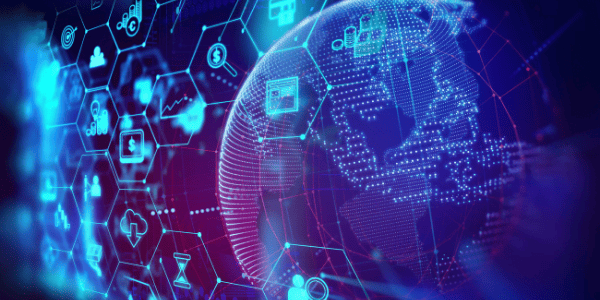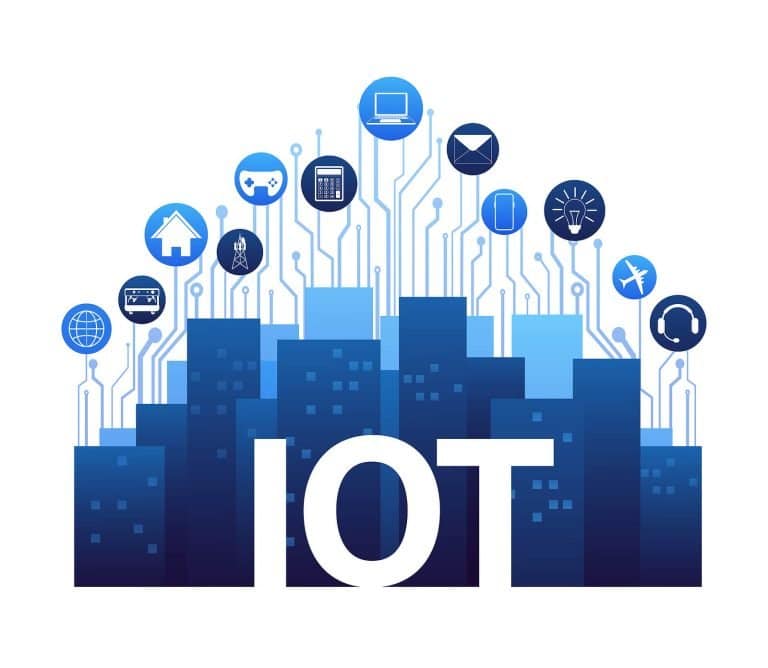What is an IoT device? What are loT devices? Or, what is IoT devices (depending on the vocabulary)?
Table of Contents
ToggleThe answers to these questions hinge on the definition of IoT. So what is that?
The Internet of Things, or IoT, is a blanket term for the billions of physical devices around the world that are currently connected to the internet, all collecting and sharing data. Laptops, desktop computers, and smartphones are among the most familiar Internet of Things devices.
Usually, however, the term IoT covers objects that you wouldn’t normally associate with a connection to the internet. The embedding of sensors into these items and internet connectivity adds a digital intelligence level to devices that would otherwise be considered “dumb,” rendering them capable of communicating real-time data without human intervention.
Practically any physical object can be transformed into an IoT device if a digital sensor is somehow attached to it, and it can be connected to the internet. This connection enables the object to communicate information and/or allows it to be controlled and monitored automatically or remotely.
Types of IoT Devices
IoT devices may contain a single sensor that enables them to perform a specific function. So, for example, a light bulb whose On / Off switch can be manipulated using a smartphone app is an IoT device of this simple type.
Larger objects may carry many smaller IoT components. For instance, in the case of a jet engine, thousands of sensors may be collecting and transmitting data about temperature, vibrations, fuel levels, and a host of other characteristics. IoT elements of “smart city” infrastructure may fill entire regions with sensors to help city planners understand and control the urban environment.
Generally speaking, IoT devices can be classified into three main groups: consumer, enterprise, and industrial.
Consumer IoT Devices
These would include smart home items such as the light bulbs we previously mentioned, smart TVs, smart speakers, toys, wearables, and smart appliances.
Enterprise IoT Devices
Smart meters, commercial security systems, and office monitoring equipment all qualify as enterprise IoT.
Industrial IoT Devices
Smart city technologies such as those for weather or traffic monitoring, robotic automation, instrument monitors, and predictive or preventative maintenance monitors are all industrial IoT devices.
There’s some element of overlap between these broad categories. As an example, technologies like smart air conditioning, smart thermostats, smart lighting, and smart security offer home, enterprise, and industrial uses.
IoT Devices List
As of August 2020, the list of best IoT devices in terms of their level of sales worldwide includes the following:
1. Google Home Voice Controller
A smart IoT device that enables its user to control in-home TV, speakers, alarms, lights, and thermostats., using their voice.
2. Amazon Echo Plus Voice Controller
In addition to enabling the user to play songs and connect to external speakers or headphones by voice, this device is also capable of making calls and messaging via voice commands. Controls are also available for compatible smart home devices, including lights and plugs.
3. Amazon Dash Button
A device optimized for Amazon Prime, which enables the user to order and reorder products from popular brands. The Dash Button won’t accept a fresh order if the prior order is not complete.
4. August Doorbell Cam
This device pairs with all August Smart Locks to continually monitor your doorstep and regulate guests’ admission to your house. It has an integrated floodlight which delivers full-color HD video and offers free 24-hour video recording.
5. August Smart Lock
Compatible with most standard single cylinder deadbolts, this device provides remote monitoring of every person coming and going into your home. It provides unlimited digital keys and has an auto-unlock feature, which opens automatically as soon as the registered user arrives near the door.
6. Kuri Mobile Robot
An entertainment robot with capacitive touch sensors, an HD camera, integrated gestural mechanics, microphones, a heart light, and speakers.
7. Belkin WeMo Smart Light Switch
This home lighting manager comes with a clip-on faceplate for “no screws” installation and connects to your existing home Wi-Fi network to give wireless access to your lights – with no subscription or hub required.
8. Footbot Air Quality Monitor
A device for measuring indoor pollution whose readouts also enable users to regulate the humidity and temperature levels in their homes, offices, or indoor public spaces.
9. Flow by Plume Labs Air Pollution Monitor
A personal air quality tracker with a stainless steel body and vegan leather strap that displays air pollution observations in the map available in its app.
10. Nest Smoke Alarm
A smoke alarm that speaks and alerts your mobile phone about any emergencies in your home: it can be set up for iPhone, iPad, or Android devices.
What Are Two Major Concerns Regarding IoT Devices?
Security and data privacy are two of the principal issues that raise concern when it comes to IoT devices.
In fact, security is one of the most significant issues with the IoT as a whole. The Internet of Things is still in its relatively early stages of development — and so far, its track record on security has been extremely poor.
Much of this is due to IoT equipment manufacturers and service providers, who have been cutting corners in their rush to bring products and services to market, and beat the competition. The design of many IoT devices gives little thought to the basics of security, such as encrypting data in transit and at rest. Flaws in the software are discovered on a regular basis — yet too many IoT devices lack the ability to be patched, putting them permanently at risk.

Security researchers have unearthed 100,000 webcams that can easily be hacked, while some smartwatches for children have been revealed to contain vulnerabilities that could enable hackers to track the wearer’s location, listen in to their conversations, or even communicate directly with them.
Because of the lax security practices of IoT vendors and manufacturers, hackers have been actively targeting IoT devices such as routers and webcams for some time. The October 2016 Mirai distributed denial-of-service (DDoS) attack, which affected DNS servers on the east coast of the United States, disrupting internet services worldwide, was the direct result of just such a hack.
At the level of physical safety, connecting industrial machinery, transport systems, and smart urban infrastructure to IoT networks increases hackers’ potential risk of discovering and attacking these devices. Deliberate acts of sabotage or terrorism are a potential result.
The information that IoT sensors routinely collect is, in many cases, extremely sensitive — shopping and eating habits, daily routines, and personal health conditions are just some of the data sets involved.
This offers a potential soft target to hackers and cybercriminals due to poor IoT security implementation. Besides this, there’s the fact that vendors and service providers often try to profit from their own consumers in the digital economy by selling their data on to third parties.
Though regulatory frameworks such as Europe’s General Data Protection Regulation (GDPR) and California 2020 in the US are taking some steps to address such matters, there is yet to be any global consensus or set of standards specifically governing the IoT. As a result, the issue of data privacy and the Internet of Things remains a grave concern.
Summary:
What Are IoT Devices?
IoT devices may contain a single sensor that enables them to perform a specific function. So, for example, a light bulb whose On / Off switch can be manipulated using a smartphone app is an IoT device of this simple type. Larger objects may carry many smaller IoT components. For instance, in the case of a jet engine, thousands of sensors may be collecting and transmitting data about temperature, vibrations, fuel levels, and a host of other characteristics. IoT elements of “smart city” infrastructure may fill entire regions with sensors to help city planners understand and control the urban environment. Generally speaking, IoT devices can be classified into three main groups: consumer, enterprise, and industrial.





